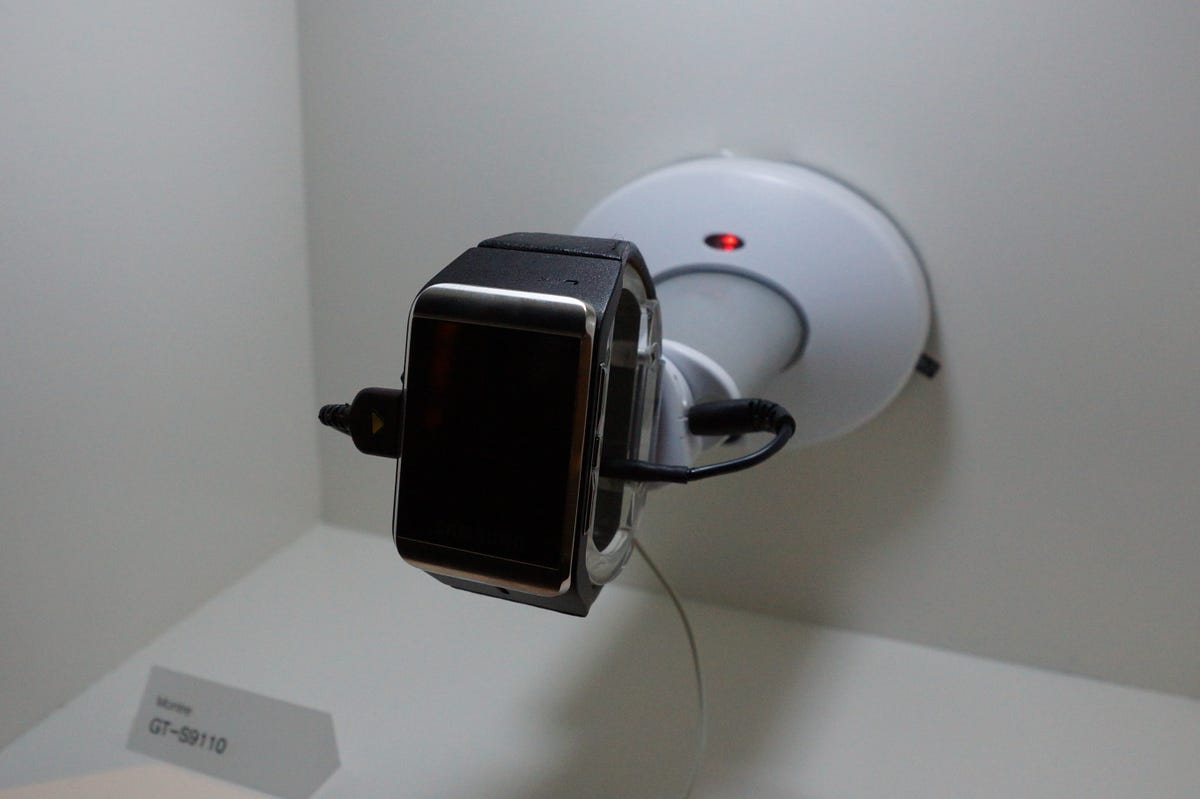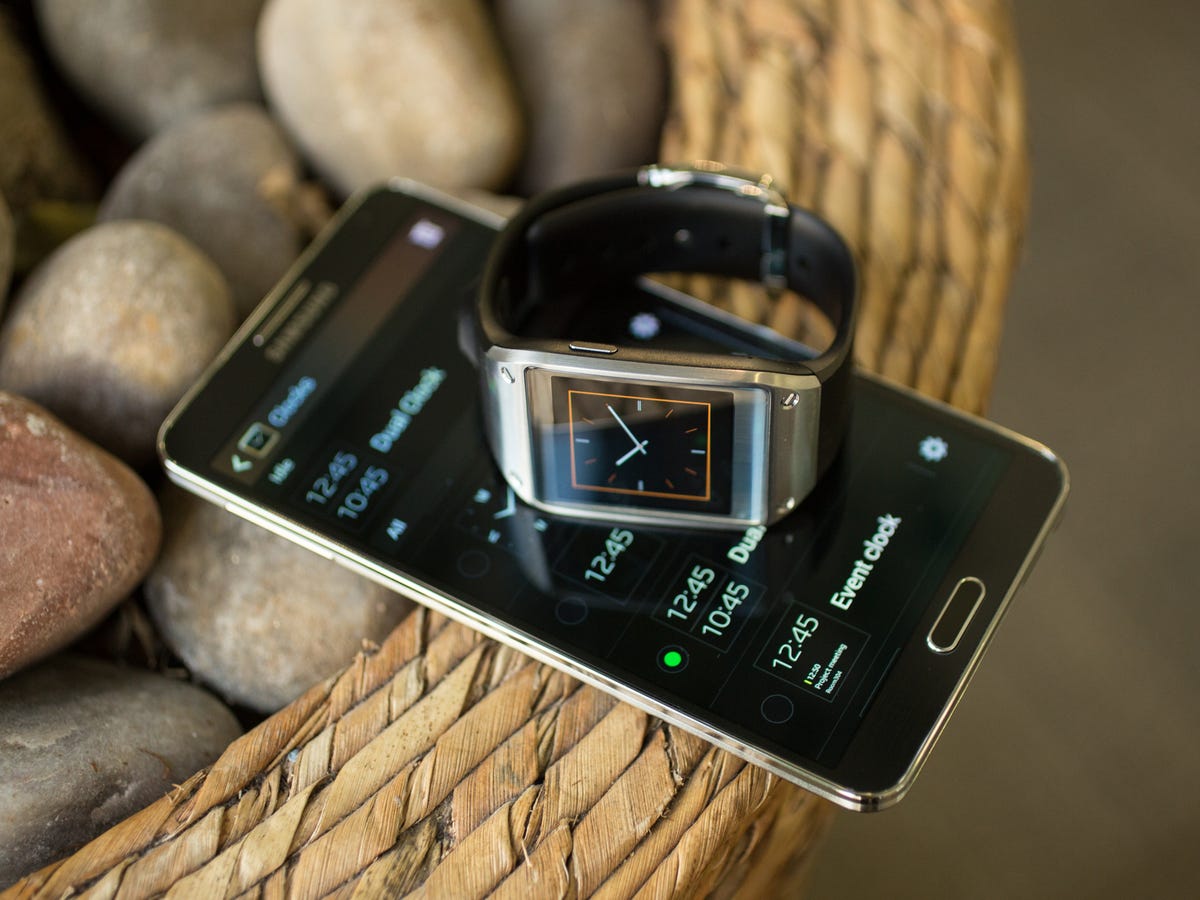JK Shin, the co-CEO of Samsung, just had to have the Galaxy Gear in lime green.
Samsung executives had spent the last few weeks before the public unveiling of Gear finalizing various colors for the smartwatch band. At first, Samsung planned only to make Gear in black and white, to ease the production process. But some key execs were convinced that it needed more variety, more splash, especially since a smartwatch is as much about fashion as it is tech. The marketing team decided to add “rose gold” and “wild orange” into the mix, while the sales team suggested “mocha gray.”
But with just a few days before the launch, Shin, who heads the mobile division, decided to add lime green too, according to people familiar with the development process. No one was going to argue with the boss.
Related stories:
- Galaxy Gear: Samsung’s big move to one-up Apple
- Samsung opens doors to New York accelerator
- Meet the Samsung Galaxy Gear
- Apple’s marketing chief takes to Twitter to knock Samsung
- The Galaxy Note 3: Samusng’s most impressive phablet yet
The 11th-hour decision forced the company to scramble to get samples ready for the September 4 unveiling, which took place at Berlin’s IFA consumer technology trade show. It couldn’t get enough demo units for the exhibition, and the lime-green version became the hard-to-find gadget on the showroom floor.
That Samsung could pull off such a change in so little time underscores the impressive speed at which the Korean behemoth can move. With Gear, the company managed to get everyone, from Shin down to the engineers, moving as a single entity to get a brand new product out in roughly a year’s time. It’s a stunning feat considering that most smartphones take a year and a half or more to develop.
Galaxy Gear, of course, is no mere smartphone. It represents a new area for Samsung and is the company’s answer to the white-hot trend of “wearable computing.” The introduction of Gear also marks an important shift in the company’s position in technology: long known as a “fast follower” that’s able to pick up, emulate, and even improve upon existing industry trends, it is now moving to cut its own path with the unproven watch.
While many companies have been working on wearable computing devices, Samsung is the largest mobile player to come to market, beating out Apple, which reportedly has been working on an “iWatch.”
The reaction so far, however, has been tepid, the lack of capabilities and compatibility a possible victim of the Gear’s rapid development time. CNET editor Andrew Hoyle said the Gear represents “style over substance” and criticized the lack of e-mail and social network support, weak battery life, wonky voice command feature, and limited compatibility with other devices (it currently works only with the Galaxy Note 3 and the 2014 edition of the Galaxy Note 10.1, but will eventually support other Samsung phones).
“Samsung’s take on the smartwatch has some potential, and it does get some things right, but its inability to perform truly ‘smart’ functions means it falls far short of expectations,” Hoyle said.
Hoyle isn’t alone. The Verge, Engadget, USA Today, and other publications also have voiced concerns about the product — particularly its $300 price. Many acknowledged that it represented a decent first step for Samsung, but they still weren’t sold.
Regardless of the early reaction, Samsung appears committed, and, ultimately, of course, consumers will decide if they like the Galaxy Gear. Either way, Samsung knows the Gear may not sell well initially, but it’s trying to create an entirely new market as smartphone growth slows.
Moving as one Once Samsung makes a decision, it throws all of its efforts behind it and moves faster than almost any other technology company in the world. It takes some companies two years to create what Samsung can make in a matter of months.
That’s partly due to Samsung’s authoritative management structure, which in many ways resembles the Steve Jobs model of operating a business. When a top executive makes a call on something — such as device color — the company scrambles to execute. Also helping its speed: the ability to design and manufacture most or even all of the components in-house.


Samsung has dabbled with wearables in the past, including the GT-S9110 watch phone from 2009. It’s on display in one of the company’s showrooms in Korea.
Shara Tibken/CNET
This isn’t Samsung’s first attempt at a watch. Its engineers and designers have been working on concept devices and actual products for years. The company launched its first “watch phone” in 1999. Samsung tried again over the years, but all were flops.
But interest in smartwatches picked up with the introduction of devices such as the Pebble, and as reports surfaced in December that Apple was hard at work on a smartwatch of its own. For its part, Samsung says it began working on Gear before the rumors popped up.
In the case of Gear, the company started testing concept designs in early 2011. Key features and the decision to move forward with a product came in part from surveys Samsung conducted more than a year ago, said Young-hee Lee, the Samsung executive vice president who oversees mobile marketing.
Samsung didn’t ask people if they wanted smartwatches. Instead, it sought to find out more about what people find annoying with smartphones. Samsung concluded that a big concern for people was missing out on things in the time it takes to get out their phones, such as not being able to take a photo fast enough. That contributed to plans for a camera in the Gear band.
Samsung Galaxy Gear smartwatch looks good, but doesn’t do enough (pictures)






Once Samsung had that survey data in hand, it was time to get high-level executives on board. It’s unclear who spearheaded Gear — Samsung won’t say — but top executives championing Gear early on included Shin and DJ Lee, president and head of sales and marketing for Samsung’s mobile business. Once top management made the decision to build the product, things started to come together quickly.
“We put all things together and said let’s just go for it,” Young-hee Lee told CNET.
Snacking on Samsung’s “lunch box” Samsung’s design team suggested the current device about a year ago, but it was slow going until this year. The US team, for instance, only saw a simple sketch on a piece of paper shortly after January’s CES. The company got really serious about building Gear during the first quarter, said executives who spoke on the condition of anonymity. Samsung designers, speaking during a panel at the IFA show in Berlin, said they considered more than 100 designs before settling on the model unveiled in September.
In the couple months before launch, Samsung handed out Gear prototypes, dubbed “bread boxes” or “lunch boxes,” that run on software and components similar to the final device but that look different in terms of the hardware, according to several people who saw those products. The company used to provide actual working prototypes with hardware similar to the end product, but Samsung tightened security starting with the Galaxy S3 to cut off leaks to the media. In the case of Gear, one bread box was in the form of a wearable, but it was made of black plastic and was much bulkier and heavier than the final product.
Most people working on the device — including those within Samsung and others at external partners — didn’t know what the actual product looked like until Gear’s launch on September 4 at IFA.


Samsung’s Galaxy Gear works with the Note 3 phablet.
Andrew Hoyle/CNET
“We’d been working on prototype hardware that was big and bulky,” one app developer, who didn’t want to be named, told CNET. “Over in Berlin for the Unpacked event, we were a little nervous. We hoped it wasn’t this huge, 3-pound weight. We were happy to see how far they’d gone on the design when Gear showed up.”
Samsung took other steps to keep its smartwatch project secret. The company required app developers working on Gear to limit the number of people in their offices who had knowledge of the device, even telling some to lock the bread box in windowless rooms in their headquarters. Within Samsung, too, security was tight. Those assigned to the project had their ID badges coded with a certain color to designate that they were part of the team. In meetings, everyone would have the same color on their badges, for example, to make sure only approved people attended.
Lining up developers Despite the tighter security, Samsung was mindful of ensuring that developers had the support they needed. Executives from Samsung’s Open Innovation Center — a new group focused on startups and led by David Eun — met with app makers in the US starting in late June to talk about Gear and to try to persuade them to develop for the smartwatch. Many of the US apps came from OIC partnerships, though Samsung hasn’t disclosed the total number.
Some early Gear apps include Banjo and Glympse, a couple of location-sharing apps; EasilyDo, a smart-assistant app; Path, a social-networking app; and Pocket and Zite, a couple of news-reading apps. Other apps on Gear include the MyFitnessPal RunKeeper and the TripIt travel app, as well as bigger names like eBay and the Evernote note-taking app.
“There’s a general excitement around wearables and a general excitement around Samsung,” said Marc Shedroff, vice president of Samsung’s Open Innovation Center and the executive in charge of forming partnerships with startups. “Between those two things, we didn’t have to shake the trees too hard to find partners to launch with.”


Now playing:
Watch this:
Meet the Samsung Galaxy Gear
2:40
Samsung distributed bread boxes to app makers from about late June until early August, giving most developers about a month to create their Gear apps. The developers communicated directly with the Korean engineering team working on the device, and engineers would respond to requests at all times — day and night.
“We’d send an e-mail over and get a response within hours,” one app developer said. “I think the Gear team worked 24 hours a day.”
Last-minute tweaks Samsung repeatedly made changes to Gear’s hardware and software before launch. It frequently overhauled the user interface, including changing the color scheme, how gestures work, how users access features, and other items. A week before launch, in fact, the user interface looked entirely different from the final product, said one Samsung executive who didn’t want to be named. The app layout had resembled the standard grid of Android icons, which the executive said was “more traditional and less clean.” Now, the apps show up as tiles similar to Microsoft’s Windows Phone interface.
Samsung even made tweaks to the hardware — altering the screws on the top of the smartwatch — just days before the unveiling.
Finally, there was Shin’s command to add lime green as an option for the Gear, and the frantic rush to get the device ready for IFA early last month.
With Gear now going on sale around the world, and hitting US stores Friday, Samsung has an even more daunting task: persuading consumers to pay $300 for what amounts to a flashy accessory for their phone. Consumers are fickle, after all, and can make decisions just as fast as Shin can decide that he wants lime green.
Samsung Galaxy Gear smartwatch hits the runway at New York Fashion Week (pictures)









